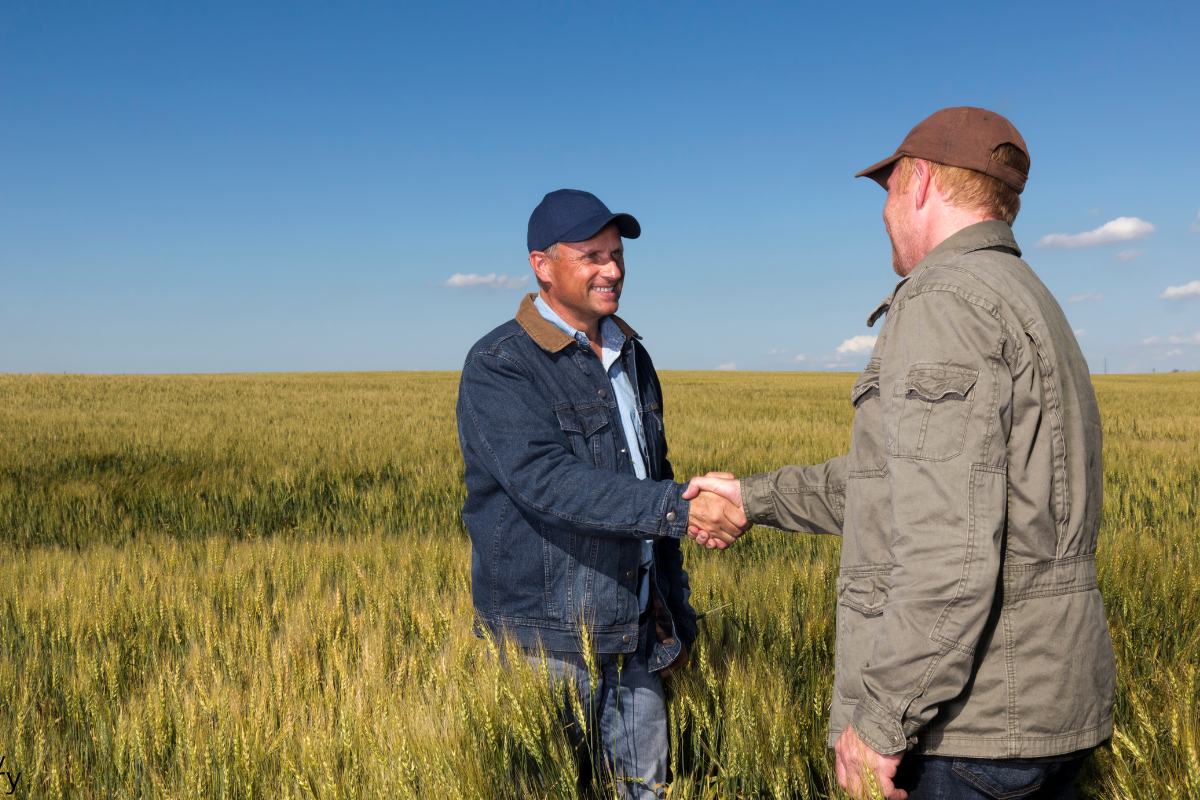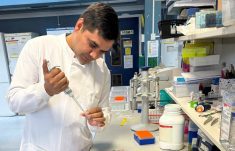With volatile commodity prices, the finger is getting pointed at farmers for profiteering while the rest of the world starves. The facts from two internationally renowned ag scientists are completely different.
In most countries, especially in the developing world, today’s higher prices may finally let farmers lift themselves out of the deepest poverty, says Clive James, longtime plant breeder who is now chair of the Philippines-based International Service for the Acquisition of Agri-biotech Applications (ISAAA).
Equally important, commodity prices may give these farmers the cash they need to upgrade their farms and to invest in genetics and technology so they can begin feeding the rest of the globe’s undernourished millions.
Read Also

Are you ready for farm succession?
What motivates some farmers to make a succession plan while others don’t seem worried.
Of the one billion people who are hungry today, 70 per cent of them are involved in agriculture, James told a recent biotech conference in Saskatoon. Half of the world’s poor are small, resource-poor subsistence farmers of the developing countries, and another 20 per cent are rural landless people completely dependent on agriculture.
For James, lifting the incomes of poor farmers is a key hurdle that must be cleared if agriculture is going to feed a world that is growing faster than ever.
“We need to double food production and we have to do it sustainably and on less resources — less water, fossil fuel, nitrogen and pesticides,” James says.
That challenge will be a lot more achievable if farmers have the economic ability to grow better crops, he says.
“Some people think that it (farm poverty) is a problem. We believe it’s an opportunity,” James says. “GM crops can contribute to the alleviation of poverty. With the growth rate we have in the major staples — rice, wheat and maize — conventional technology alone will not allow us to double food production by 2050.”
Ag scientists say they are producing the tools that farmers need. “You’ll start to see products that have more drought tolerance and resistance,” says Jerome Konecsni, director general of the Plant Biotech Institute of the National Research Council in Saskatoon.
“The advances in DNA sequencing have been tremendous over the past 10 years,” Konecsni told the Agricultural Biotechnology International Conference. “We couldn’t have anticipated the advances and the technologies, even that we’ve seen in our own labs. With the equipment we bought five years ago compared to the equipment we purchased this last year, the capacity and ability is phenomenal.”
Incredible traits on horizon
“Agricultural biotechnology is blossoming,” Konecsni says. “There’s certainly interest as people become aware of how it can address the major opportunities and challenges facing the world.”
Researchers will learn how to minimize the need for fertilizer and other inputs, Konecsni says. By developing plants that fix nitrogen from the air through their leaves instead of through their roots, for instance, they will help farmers, and they will also help humanity as a whole by freeing up rare petroleum for other uses.
Farmers will help the world in other ways too. They may even reduce global warming by planting crops that have been engineered to absorb more greenhouse gases.
Of course, they will grow food too, and with the help of science, the foods will be healthier and more nutritious than ever.
Says Konecsni, “We can’t even conceive what we will learn and what might be possible.”
James feels there are two requirements for the continued growth of biotech and GM crops in the next five years — political support from lead institutions, plus a new wave of improved biotech crops.
Internationally, James says, there’s more focus on the fact that farmers are key to the future of food.
“I sense, as I travel the globe, an increase in political will in support of this technology. The person who articulates this best to me is Wen Jaibo, the premier of China. He’s a politician who speaks in support of this technology on a public platform and he calls it ‘The Big Science,’” says James.
The Bill and Melinda Gates Foundation also supports biotechnology. James quotes Bill Gates as saying, “We include transgenic approaches because we believe they can help address farmers’ challenges faster and more efficiently than conventional breeding alone.”
James says a partial list of new technologies that will be claiming major acreages within the next five years includes:
Smartstax corn in the U.S. and Canada.
Amflora potato in Germany, Sweden and Czech.
Herbicide-tolerant soy from BASF/ Embrapa in Brazil 2012.
Golden rice in 2012 for the Philippines, Bangladesh and India.
Bt rice in China in about three years.
Phytase maize in China in about three years.
Drought-tolerant corn in the U.S. and Canada starting in 2012, and in Africa by 2017.
Soybean with omega-3 in about three years.
Resistance to golden bean mosaic virus in about three years.
Then, those breakthroughs will be followed by the next set of technical triumphs, including improved nitrogen use efficiency in corn, biotech wheat, and the development of drought tolerance in rice.
Many of these innovations will affect millions of farmers, often on poor farms. “We’re looking at 150 million hectares of rice in Asia,” says James. “They produce and consume 90 per cent of the rice in the world. When China grants a biosafety certificate for biotech rice, that will be important in China, in Asia and on a global basis.
“Golden rice will probably be available in the Philippines and Bangladesh first, then in India,” James adds. “With Bt rice in China, there are 110 million households in that country that grow rice. In all of Asia there are 250 million households that grow rice. At four per family, that’s a beneficial group of one billion people.”
Millions of small farmers
Even genes that seem more targeted at the developed world will be able to help poor farmers. For instance, phytase corn has a potential to increase the efficiency of pork production. China currently produces 75 million acres of corn, and with a steadily increasing demand for meat, this GM product will help farmers there create wealth.
Monsanto and BASF are working with the Gates Foundation and donating technology to develop and make GM drought-tolerant maize available to national programs in Africa.
Omega-3 soybeans will deliver benefits to the consumer rather than the producer. Golden bean mosaic virus control through genetic modification will be important to countries in Latin America that are dependent on beans.
The two most populous countries in the world — China and India — are now adopting biotechnology. They were just two of 25 countries around the world using biotech crops in 2009 on 330 million acres. Of those countries, nine were in the developed world and 16 were in developing countries in South America, Africa and Asia.
James says of the 14 million farmers using GM crops in 2009, about 13 million are considered small farmers. And there has been close to a 100 per cent readoption of the technology. Why? Because it delivers benefits, according to James.
“Developing countries are benefiting from this technology and this is right and proper because that is where the need is,” he says.
Canada’s farmers will win
All this doesn’t mean there will be a smaller role for Canadian farmers. In fact, Konecsni says farmers will buck the global trend that is seeing more of the developed world’s industry moving to poorer areas.
“Canada has a huge role when you look at our agricultural infrastructure — the number of producers, the land we have, and the fact that most of our land is used to provide exports to the world markets,” Konecsni says. “This is a huge opportunity for Canada and we should be a leader.
“What we need to do is get decision makers at all levels recognizing the role Canada has, and that this is an area where other countries can’t compete with us,” Konecsni says.
Canada may not be able to compete with India’s labour costs or with China’s intellectual capital, Konecsni agrees. “We should focus on our strengths, like areas of agricultural research and agricultural production, where we can be a world player. We need to get everyone in the Canadian government system to recognize and appreciate it.”CG
———
The world’s farmers need good prices so they can feed their people














